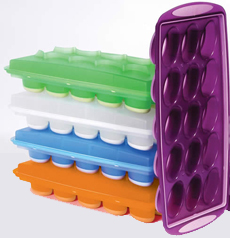|
What’s up, doc? Here’s a little history of one of our most popular veggies: carrots. According to the USDA, Americans consume 11.8 pounds a person per year. (Beyond raw carrots, this figure includes carrot cake, carrots in soups and stews, and so forth.)
In the beginning, all plants and animals were wild. Over thousands of years of cultivation/domestication, many took on different forms, as farmers bred them for the most desirable characteristics.
The domesticated carrot, botanical name Daucus carota subspecies sativus, started life about 10,000 years ago as a bitter white root vegetable. Over thousands of years, it has been bred into a fleshy, juicy, sweet edible root.
Its name originated in the Indo-European root ker-, for horn (due to its horn-like shape). That evolved to the Greek karoton, the Late Latin carota and the Middle French carotte.
Cultivated carrots originated in present day Afghanistan some 5000 years ago, most likely as purple or yellow roots. Mutants and natural hybrids occurred naturally, that crossed the purple and yellow carrots with both wild and cultivated varieties and produced other colors, including the now-ubiquitous orange.
For a long time, purple carrots were the norm, with occasional mutations producing yellow and white varieties, which lacked the purple pigment anthocyanin. You can still find these heirloom breeds in farmers markets.
It was Dutch farmers in the late 16th century who took mutated strains of yellow and white carrot and, over time, bred them into the orange carrots that are standard today.
|
|

The colors of carrots. The original wild carrot was white, followed by domesticated carrots in purple and yellow (photo by Stephen Ausmus | Wikimedia). |
|
Some believe that the reason the orange carrot became so popular in the Netherlands was in tribute to the emblem of the House of Orange and the struggle for Dutch independence. This could be, but it also might just be that the orange carrots that the Dutch developed were sweeter and plumper than their purple forebears.
THE ”INVENTION” OF BABY CARROTS
Fast-forward 200-plus years to the next carrot innovation:
In 1986, a California carrot grower named Mike Yurosek sought a use for carrots with flaws and imperfections that could not be sold whole. These “reject carrots” accounted for up to 70% of the carrots headed down the bagging conveyer belt! Yurosek made lemons out of lemonade and invented the baby carrot. He took the broken and dwarfed carrots and sold them as “baby carrots,” which have become the fastest growing segment in carrot industry.
But if you want to save money and slice your own from conventional carrots, we highly recommend a crinkle cutter. It makes veggies as fun as…baby carrots.
|



